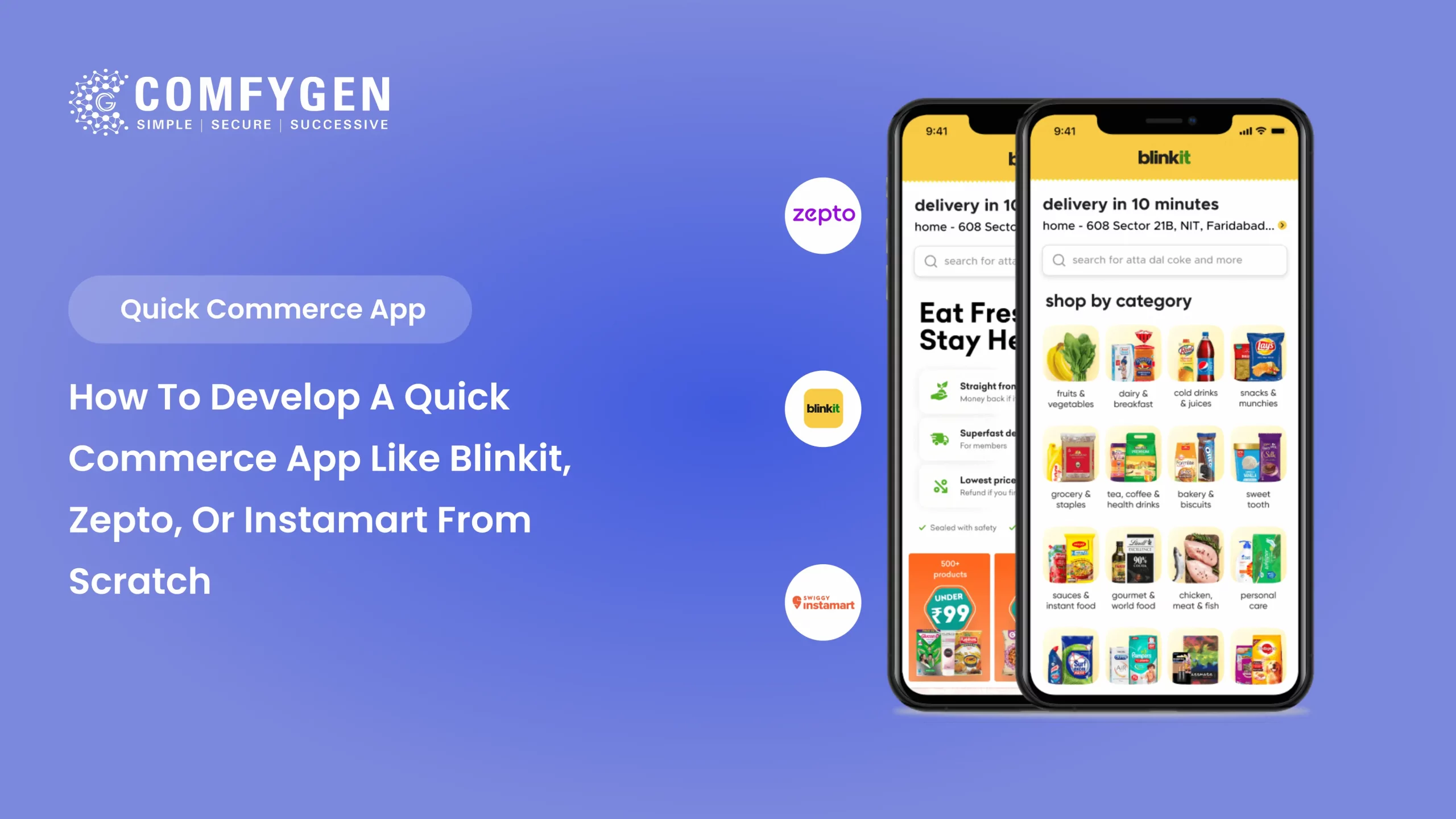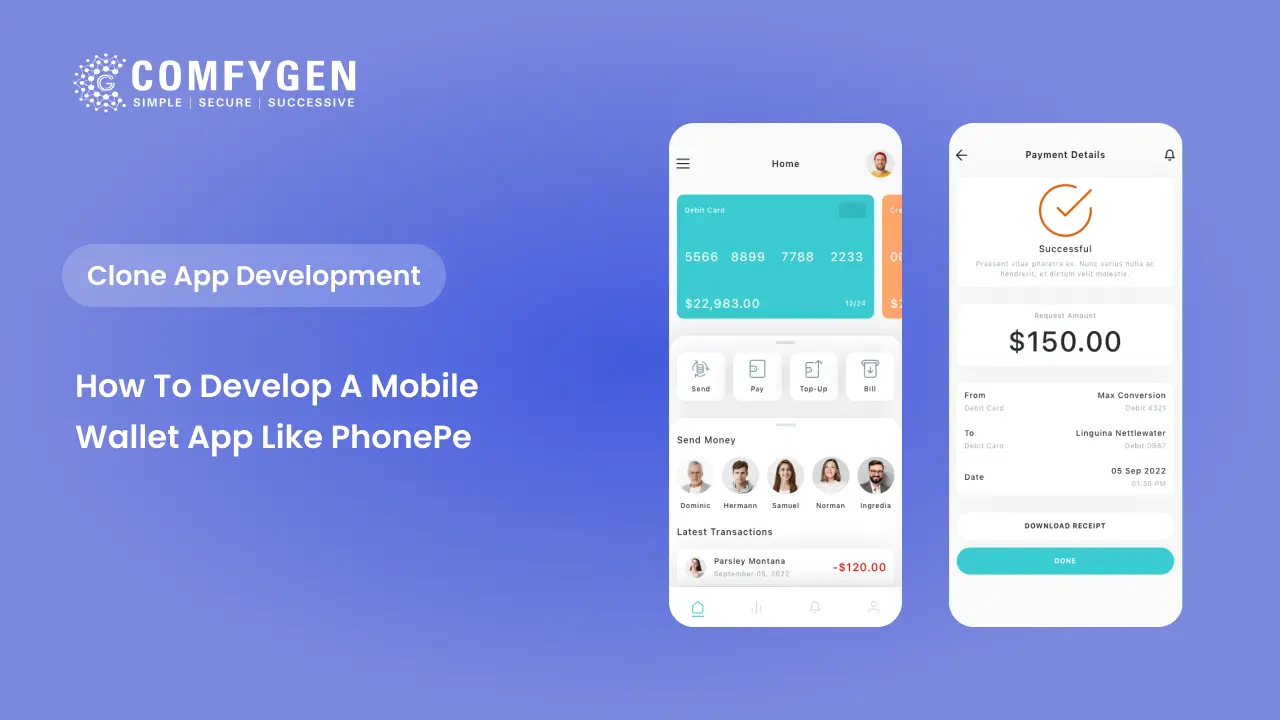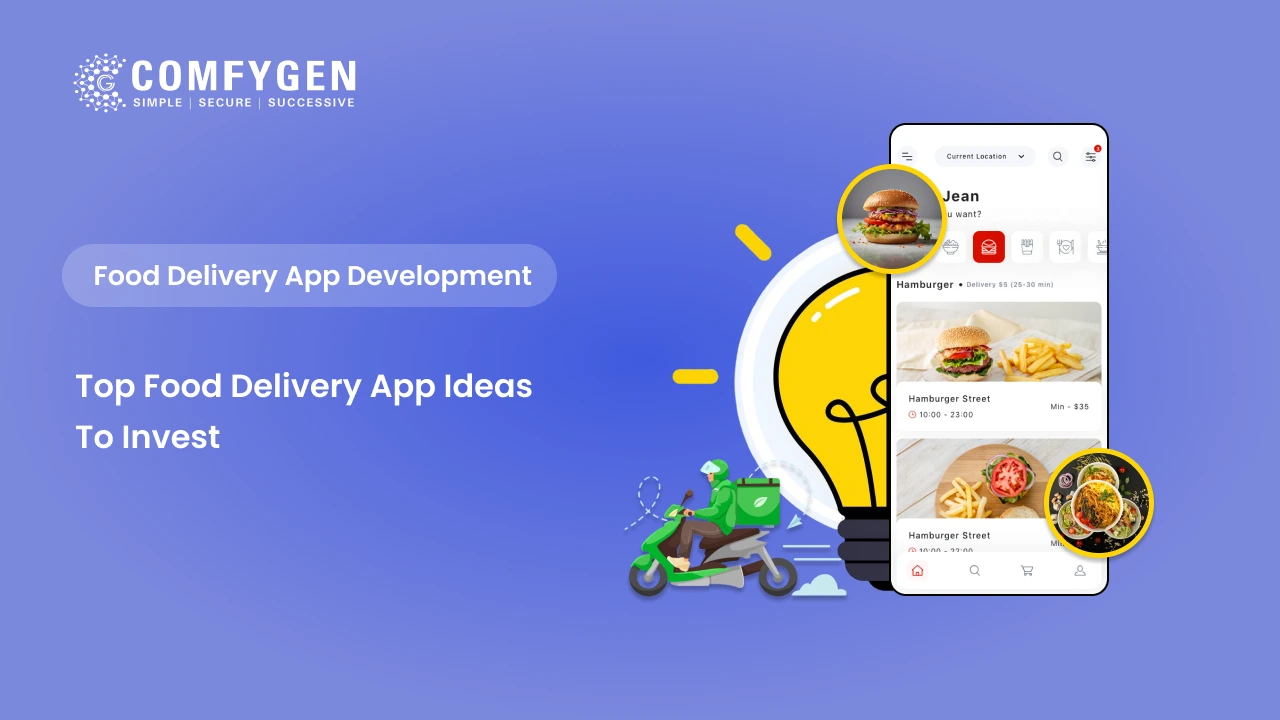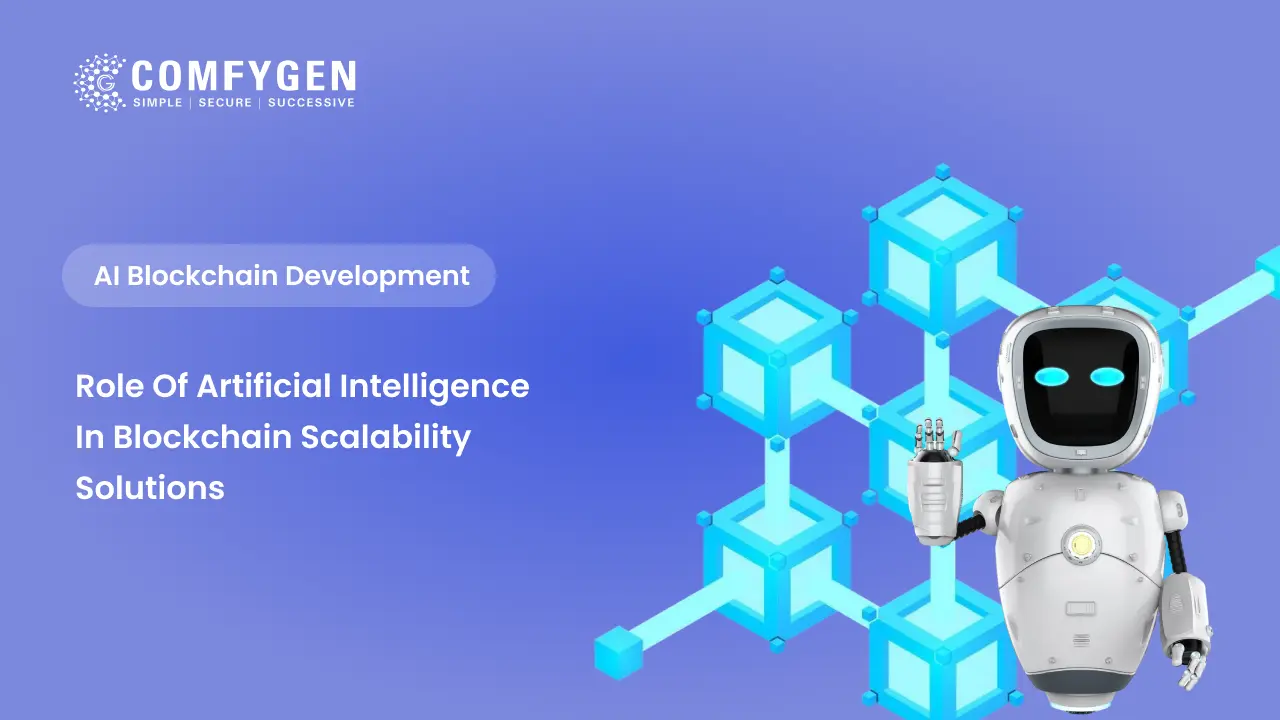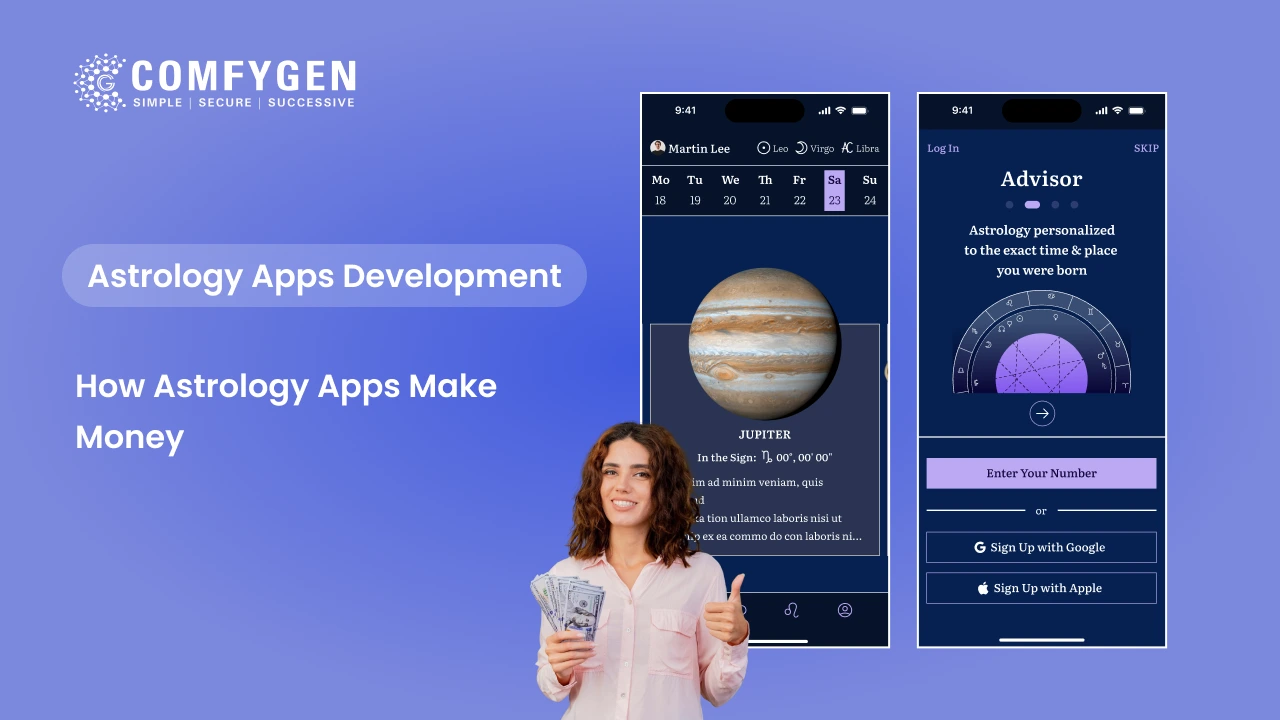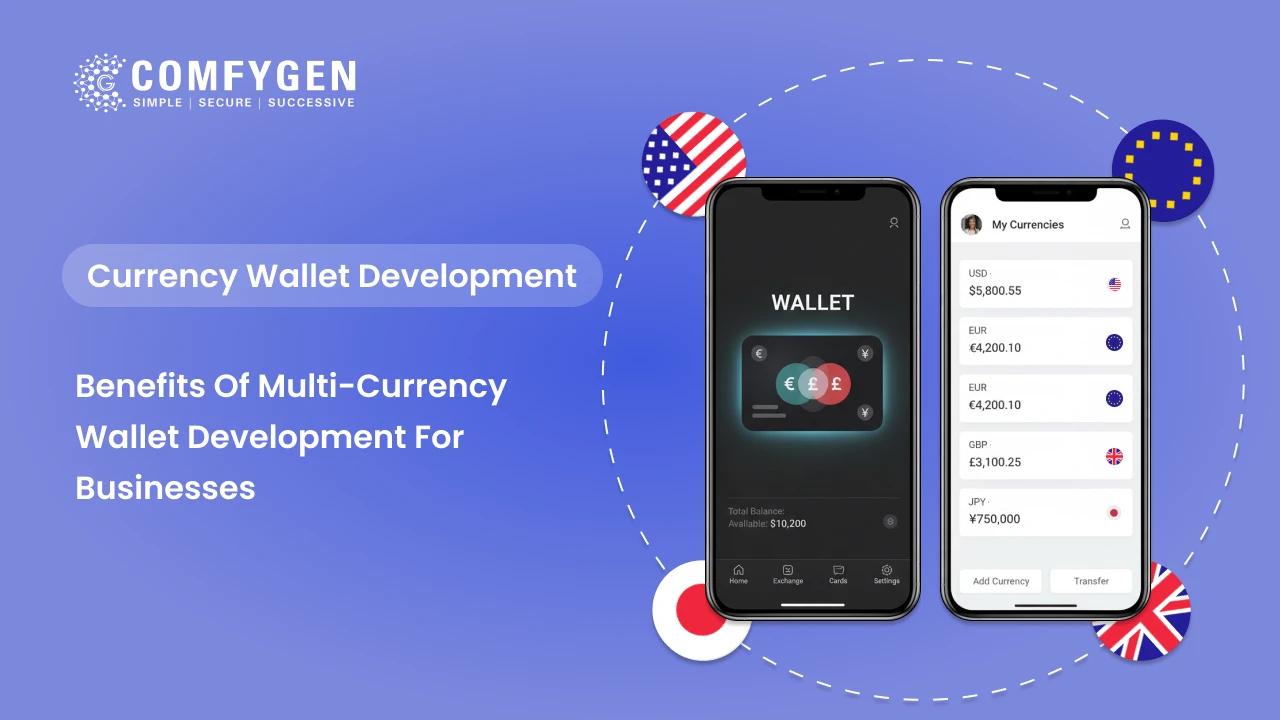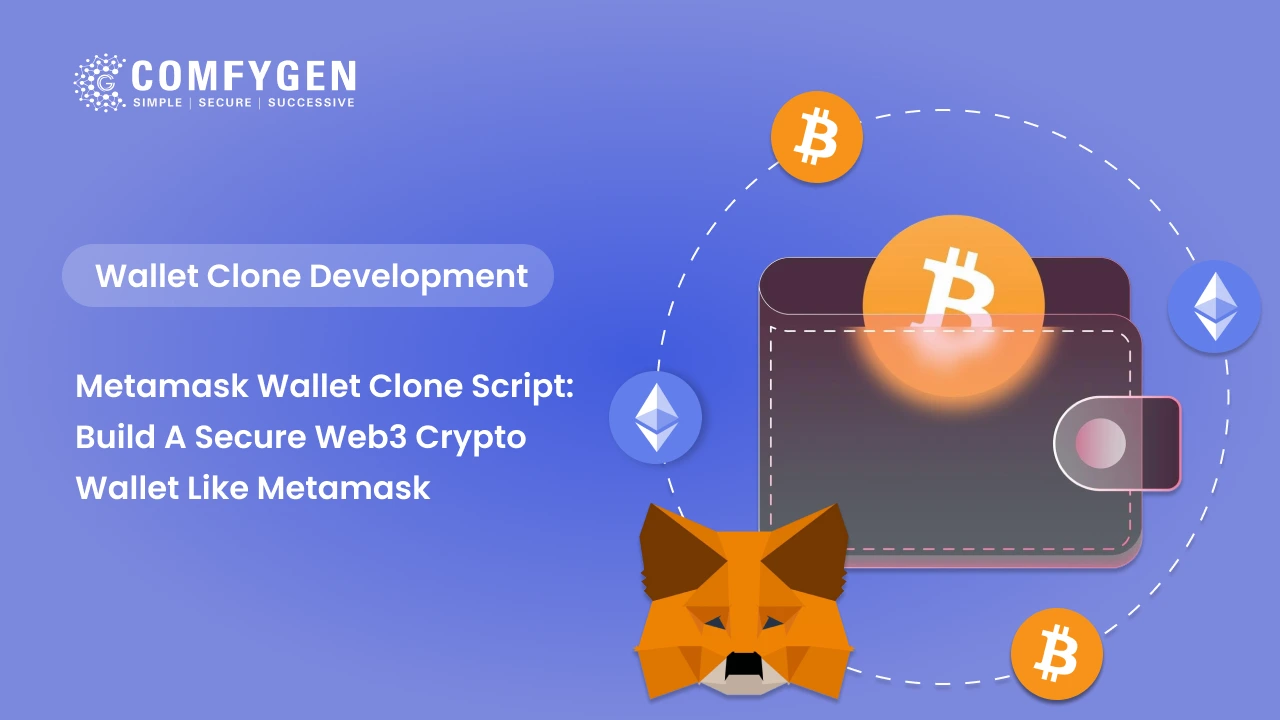How to Develop a Quick Commerce App Like Blinkit, Zepto, or Instamart from Scratch
The need for fast delivery of groceries and daily essentials is growing every day. People no longer want to wait for hours or even a day to get their orders—they want everything delivered within minutes. This rising demand has given birth to a powerful solution: the Quick Commerce App Development. The global online grocery market is expected to reach $2.1 trillion by 2030, growing at a fast rate of 25.3% each year. Apps like Blinkit, Zepto, and Instamart have changed the way people shop by delivering items in just 10 to 30 minutes. As life in cities becomes busier, quick and easy shopping is more important than ever.
For startups and businesses, this is a great chance to enter the instant delivery app development market. But building an app like Blinkit or Zepto requires smart planning, the right technology, and a reliable delivery system.
In this blog, we’ll guide you through everything you need to know—from key features and business models to costs and the step-by-step process of building a successful quick commerce app from scratch.
Why Quick Commerce Is the Future
Quick commerce—or Q-commerce—is rapidly transforming how consumers shop, especially in high-demand categories like groceries, personal care, snacks, and medicines. The traditional eCommerce model that promised “next-day delivery” is no longer fast enough. Today’s consumers want speed, simplicity, and certainty—all delivered in 10 to 20 minutes.
Here’s why quick commerce is not just a trend, but the future of retail:
1. Busy Urban Lifestyles
In metro cities and urban hubs, people are juggling work, family, and social commitments. The time to visit physical stores is shrinking. Q-commerce apps cater to this fast-paced life by delivering essentials at the tap of a button, eliminating the need to plan ahead.
2. The Rise of Instant Gratification
With the success of apps like Blinkit and Zepto, consumers now expect fast delivery as a standard. Whether it’s snacks during a movie night or baby food late at night, people don’t want to wait—and with Q-commerce, they don’t have to. This growing demand is fueling interest in fast delivery app, where speed, convenience, and real-time logistics come together to redefine shopping experiences.
Instant satisfaction isn’t just a convenience—it builds loyalty. Brands offering faster deliveries are seeing higher repeat orders and customer retention rates.
3. Growing Demand for Daily Essentials
Groceries, household items, OTC medicines, and toiletries are recurring needs. Instead of large weekly shopping trips, consumers now prefer to order in smaller quantities more frequently—whenever they need something. This is where Q-commerce steps in with real-time availability and 10-minute fulfillment.
Apps like Instamart and Zepto have reshaped the grocery delivery app development landscape by shifting from scheduled slots to instant fulfillment, which has led to increased basket sizes over time.
Quick Commerce Market Highlights
The quick commerce app development industry is witnessing unprecedented growth, driven by evolving consumer behavior, increasing smartphone penetration, and the rise of hyperlocal logistics. As demand for faster fulfillment continues to rise, the future of instant delivery app solutions looks promising, with innovative technologies and business models redefining how essentials reach customers in minutes. Here’s a closer look at the key trends shaping this booming sector:
Market Value & Growth Projections Of Quick Commerce
The quick commerce market in India is projected to reach $5.5 billion by 2025, up from just under $1 billion in 2021. This represents a compound annual growth rate (CAGR) of over 45%, making it one of the fastest-growing retail segments in the country.
10-Minute Delivery Becomes the Norm
What started as a competitive differentiator is now an industry benchmark. In metro cities like Delhi, Mumbai, Bengaluru, and Hyderabad, 10–15 minute delivery has become the new standard. This growing trend has driven a surge in 10 minute delivery app development, as companies like Blinkit, Zepto, and Swiggy Instamart rely on dark stores and micro-warehouses, strategically located to fulfill orders lightning-fast.
Millennial & Gen Z Preference for Speed
More than 60% of millennials and Gen Z consumers now prefer quick commerce apps over traditional eCommerce platforms for daily essentials. The main drivers are:
-
Instant convenience
-
No minimum order barriers
-
Flexible payment options (UPI, wallets, COD)
Younger consumers are not only more digitally native, but also less brand-loyal, prioritizing delivery speed and app experience over retailer reputation.
How to Develop a Quick Commerce App Like Blinkit, Zepto and Instamart
A successful grocery delivery app development involves more than just tech. It requires strategy, market understanding, and a user-first approach. Let’s explore the key steps to build your own quick commerce app from scratch.
Market Research & Target Audience Analysis
Start by understanding what your audience needs and where demand is high. Study consumer behavior, shopping habits, and location-specific gaps to build a solution that solves real problems.
Define Your Unique Selling Point (USP)
With strong competition in Instant delivery app development market, your app must offer something different. Whether it’s faster delivery, better pricing, or exclusive products, a clear USP helps attract and retain users.
Choose a Scalable Business Model
Select a model that supports future growth—whether it’s inventory-based, marketplace-led, or hybrid. A scalable approach ensures your operations can expand smoothly with demand.
Hire a Dedicated App Development Team
Work with experienced developers like Comfygen Technologies who understand quick commerce systems. A skilled team ensures you get a secure, high-performing app with real-time capabilities and smooth backend integration.
Design UI/UX that Focuses on Speed & Ease
Building a quick commerce app like Instamart is all about saving time. A well-optimized UI/UX design ensures your app is clean, fast, and easy to use, allowing customers to place orders within seconds—even during peak hours.
Build MVP with Core Features
Start lean by launching a Minimum Viable Product (MVP) with must-have features like product listings, order tracking, and payments. This helps you test the market quickly and make smart improvements.
Launch & Continuously Optimize Based on Feedback
Go live in select locations and gather feedback to refine your app. Regular updates, bug fixes, and feature upgrades based on user behavior are key to long-term success.
How Much Does It Cost to Develop an Instant Grocery Delivery App
The cost to develop a quick commerce app varies depending on features, team size, and technology stack, but on average:
| App Type | Estimated Cost (USD) |
| Basic MVP | $10,000 – $25,00 |
| Mid-range Custom App | $25,000 – $60,00 |
| Fully Scalable Enterprise | $60,000 – $100,000+ |
Key Factors Affecting Development Cost
The total cost of building a quick commerce app depends on several technical and strategic choices. Below are the main elements that influence your budget:
Platform Choice (Android, iOS, Web)
Building for multiple platforms (Android, iOS, Web) increases development time and cost. Choosing between native or cross-platform also impacts your overall budget and user reach.
Features & Complexity
More features mean more development effort. Advanced options like real-time tracking, AI-powered recommendations, and custom delivery modules add to complexity—and cost.
UI/UX Design
A simple, fast, and intuitive design is essential for user retention. Custom designs or animations will raise design costs compared to basic layouts.
Backend Infrastructure
A strong backend handles order processing, inventory, notifications, and delivery tracking. The more scalable and secure your infrastructure, the higher the investment.
Third-Party Integrations (Maps, Payments, Analytics)
Integrating services like Google Maps, Razorpay/Stripe, Firebase, or analytics tools adds functionality but also increases licensing and development expenses.
Testing & Security Protocols
To ensure your app is bug-free and secure, you’ll need thorough QA testing and encryption for data protection. More testing layers equal higher costs—but better performance.
Location-Based Scalability
Planning for multi-city or multi-country operations means setting up geo-specific settings, pricing, logistics, and language support—raising initial development and ongoing maintenance costs.
Essential Features of 10-Minute Delivery Apps
Dark Store & Micro-Warehouse Integration
To ensure fast delivery, the app must connect with local dark stores and micro-warehouses. This helps manage inventory and fulfill orders within 10–15 minutes in nearby areas.
AI-Based Inventory and Route Planning
Artificial Intelligence can predict demand, manage stock levels, and optimize delivery routes in real-time—ensuring efficiency and reducing delivery delays.
Live Notifications & Status Updates
Customers expect real-time updates—from order confirmation to delivery arrival. Push notifications and SMS alerts improve user trust and satisfaction.
Smart Delivery Partner Assignment System
An automated dispatch system assigns the nearest available delivery partner based on location, order weight, and traffic—ensuring timely deliveries with minimal delays.
User-Friendly Mobile Interface
The app should have a clean, responsive, and easy-to-use interface. Users should be able to search, order, and track items in just a few taps without confusion.
End-to-End Encryption & Secure Payments
Security is a top priority. Integrating secure payment gateways with encryption ensures user data and transactions are always protected.
Customer Service Chatbot or Agent
Offering live chat support or AI-based bots helps resolve customer issues quickly—improving experience and building brand loyalty.
Multi-Language & Multi-Region Support
To reach a wider audience, the app should support multiple languages and adapt to different regions with local currency, taxes, and delivery settings.
How Can Comfygen Technologies Help Develop Apps Like Blinkit, Zepto, and Instamart?
Want to build an app like Zepto or Blinkit? If yes, you’re in the right place! At Comfygen Technologies, we specialize in building custom on-demand delivery apps tailored to your business goals. Whether you need a dark store management app, real-time route optimization, or a multi-vendor marketplace—we’ve got you covered. Our expert team has hands-on experience in developing quick commerce platforms with AI-powered logistics, live tracking, secure payment integration, and user-friendly interfaces. We help businesses create fast, reliable delivery systems that meet the growing demand for 10-minute grocery delivery. Let’s bring your Instant delivery app development idea to life—just like Zepto, Blinkit, or Instamart!
Quick commerce is no longer a trend—it’s a consumer expectation. If you’re serious about building a Blinkit, Zepto, or Instamart competitor, the time to act is now.
Let Comfygen Technologies turn your quick delivery app development dream into reality.
FAQs
Quick commerce apps use a blend of modern technologies including: Frontend: Flutter, React Native, Swift (iOS), Kotlin (Android) Backend: Node.js, Python (Django/Flask), Laravel Database: PostgreSQL, MongoDB, Firebase Real-time Tracking: Google Maps API, Mapbox AI/ML: For demand forecasting and route optimization Cloud: AWS, Google Cloud, Azure for scalability Security: SSL encryption, secure payment gateways, token-based authentication Instant delivery apps generate revenue through multiple streams: Delivery charges Commission from partner stores Surge pricing during peak hours Subscription models (like Zepto Pass) In-app ads or brand promotions Private label products or own inventory salesHow much does it cost to develop an instant delivery app?
How long does it take to develop a 10-minute delivery app?
What technologies are used for building quick commerce apps?
How do instant delivery apps make money?
How can Comfygen Technologies help in developing an instant delivery app?

Mr. Saddam Husen, (CTO)
Mr. Saddam Husen, CTO at Comfygen, is a renowned Blockchain expert and IT consultant with extensive experience in blockchain development, crypto wallets, DeFi, ICOs, and smart contracts. Passionate about digital transformation, he helps businesses harness blockchain technology’s potential, driving innovation and enhancing IT infrastructure for global success.
Based on Interest
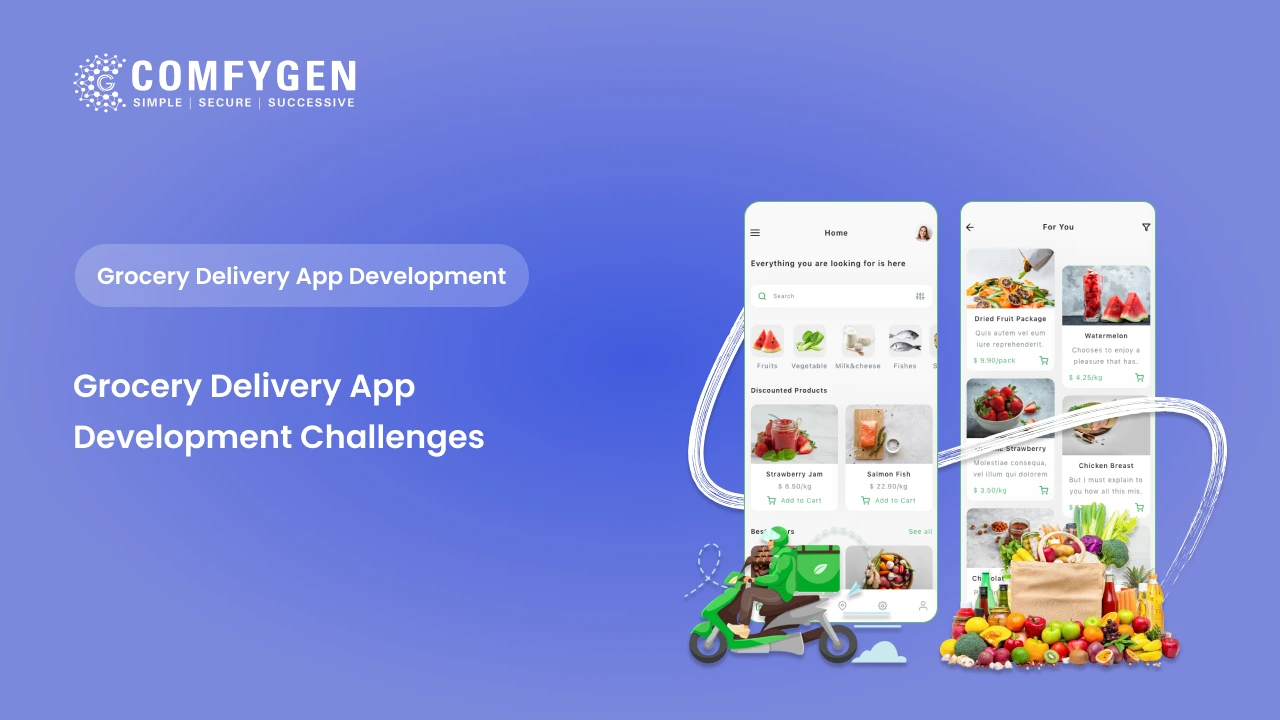
Grocery Delivery App Development Challenges: Common Problems and How to Overcome Them
In today's fast-paced digital age, the online grocery delivery industry is experiencing significant growth. With consumers preferring doorstep facilities over traditional shopping,…

